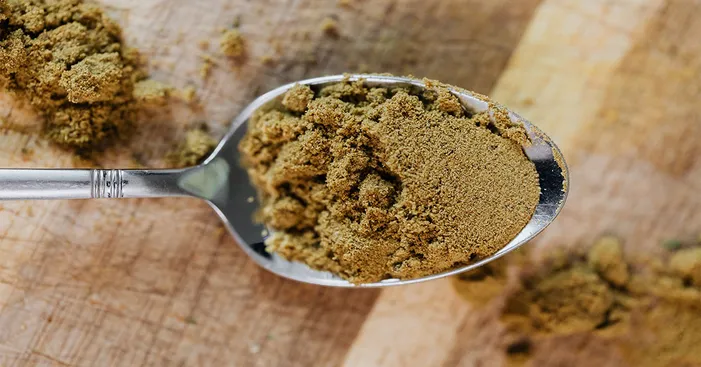Table of Contents
Ground cumin is a spice that has been used for centuries in many different cultures around the world.
It has a warm, earthy flavor that adds depth and complexity to dishes.
From Indian curries to Mexican tacos, it is an essential ingredient in many cuisines.
In this blog post, we’ll explore the history of ground cumin, its health benefits, and how to use it in your cooking.
So grab a spoonful of this flavorful spice and let’s get started!
Cumin: overview
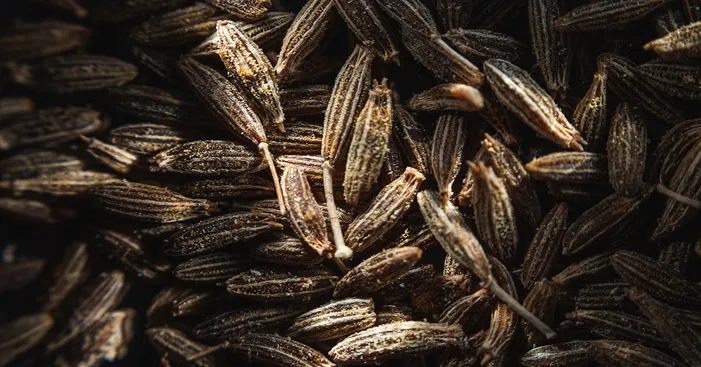
The cumin plant goes by the scientific name Cuminum Cyminum which is part of the Apiaceae family.
As it grows, this herb is very similar to caraway as it also gives white flowers that turn into small seeds within 4 months.
The cumin grains are green-brownish with 4 white stripes and a very unique strong taste that is both bitter and spicy.
Belonging to the same family as parsley and carrots, cumin is a famous aromatic spice used in many dishes.
Some people may even argue that it is one of the most used spices in the world.
The first mentions of cumin were in Ancient Egypt around 3000 BC as they used it among other spices to protect their mummies.
Also, archaeologists also found other excavations that dated back to 2000 BC and show that Syrians also used this spice.
Because of that, the origins of cumin points to the Mediterranean region specifically Syria and Egypt, Iran, and India.
However, many other countries also produce cumin including Mexico, China, and Italy.
It also made its way into the bible with 3 verses mentioning it as a spice or as an aromatic plant.
Today, India is the largest producer of cumin with over 70% of the global market, and also the largest consumer.
Types of cumin:

Even though many seeds are known as “cumin”, most of them are not even cumin.
For instance, Centratherum anthelminticum seeds are called “wild cumin” but they come from another family plant (Asteraceae = Daisy).
Also, many countries across the Mediterranean refer to Nigella sativa seeds as “black cumin”.
The nigella seeds don’t look like cumin and they come from a completely different family plant called Ranunculaceae AKA Buttercups.
There are two major types of cumin seeds:
- White cumin: (Cuminum cyminum)
- Black cumin: (Elwendia persica or Bunium persicum)
The common one we consume is “white cumin” which is popular around the world as a spice.
It tends to have a nutty smell and a unique strong aroma.
The seeds of black cumin are about the same size with white stripes and a darker brown color.
People in Morocco and across the Mediterranean use black cumin in food and natural traditional medicine practices.
However, it is forbidden in many places because of its analgesic effect which is why these seeds are more expensive than white cumin.
The black version of cumin usually has a smoky taste but can be used in the same way as the white type.
Difference between ground cumin and cumin grains:
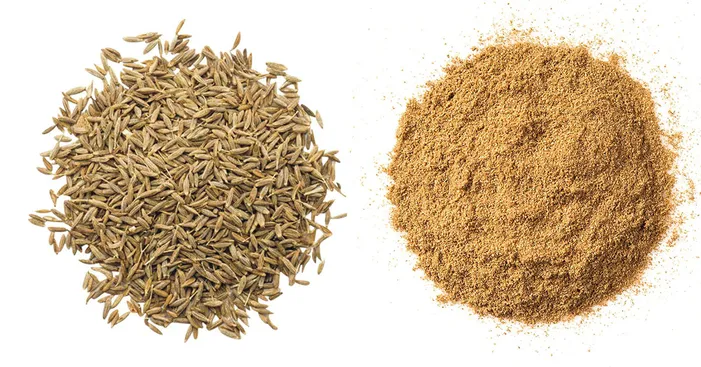
Since ground cumin is basically powdered seeds, we are led to believe that it has the same characteristics.
However, this isn’t the case since ground cumin tends to have a less pronounced aroma than the seeds.
This is because grinding these small seeds releases the chemicals responsible for the unique cumin aroma.
As they evaporate in the air, the final composition of ground cumin lacks some of its aromatic agents.
Because of that, many Chefs recommend keeping cumin seeds as a whole and only grinding them during preparations.
That way, your freshly ground cumin will have a stronger flavor than pre-ground cumin.
Is it possible to use ground cumin instead of seeds?
Generally speaking, you can use ground cumin instead of seeds in any recipe you like.
The only thing you may need is a spice grinder and then the choice is yours whether to grind them or use them as a whole.
Nonetheless, there may be a few exceptions like the Indian technique of frying cumin seeds in oil to later use it as a flavored seasoning.
This technique is not possible to perform with cumin powder as it you won’t be able to filter it afterward and it will overpower the seasoning.
In addition, it is very common to add cumin grains to bread in its dough state and then cook the bread with the seeds attached.
This is also not possible with ground cumin as the powder would burn in the oven and the bread won’t have a good taste.
When it comes to cooking, there are no rights or wrongs as everyone can have his take and own techniques.
However, we learn from the experience of our previous ancestors to ensure better success for our recipes.
Based on that, it is better to toast cumin seeds in a dry pan before grinding them which will release more flavor.
The process only needs 1 or 2 minutes but don’t forget to keep stirring to avoid burning.
It is also not possible to toast cumin after grinding as the powder would stick to the pan and burns fast.
Ideas to use ground cumin and cumin seeds:
How to use cumin seeds and ground cumin?
Cumin is very popular in India which is why you will notice that we keep mentioning the Indian culture throughout this post.
For instance, seeds are one of the signature ingredients in the famous Indian curry.
In case you can’t grind the seeds, you can fry them in oil and then use it to add flavor to your ground meat before using it.
Actually, cumin-infused oil is a very common alternative to ground cumin and you can use it in sauces, soups, salads…
As for the seeds, you can sprinkle them as a whole on almost any dish to improve the texture and flavor.
Nonetheless, cumin is more common in its powder which allows it to blend better with other flavors like ginger, garlic, and coriander.
People use ground cumin to season vegetables, sauces, casseroles, soups, grilled meat, and seafood.
Ground cumin nutritional values and health benefits:
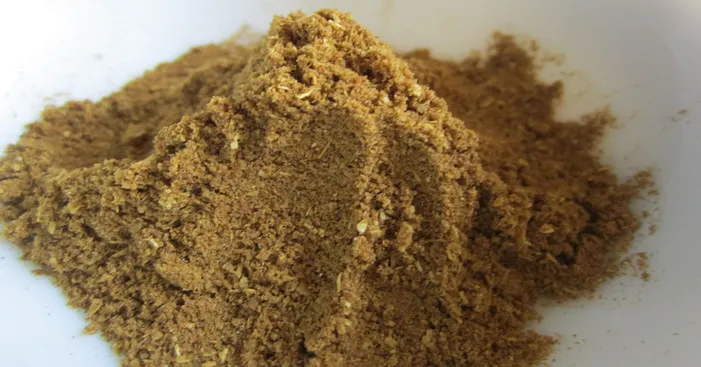
Nutritional values:
Aside from the few chemicals responsible for the fragrance of cumin which evaporates with grinding, the other nutrients remain the same whether we’re talking about seeds or powder.
To summarize, cumin nutrients are most beneficial for the digestive system and the stomach in general.
For instance, this spice can maintain a healthy acidity in the stomach by stimulating the secretion of acidic enzymes.
These small seeds are a great source of many nutrients including minerals, vitamins, carbohydrates, protein, and plant-based compounds.
Even though the maximum safe daily dose of cumin is only 1.5 tsp (3g), you would be amazed at the number of nutrients it unfolds.
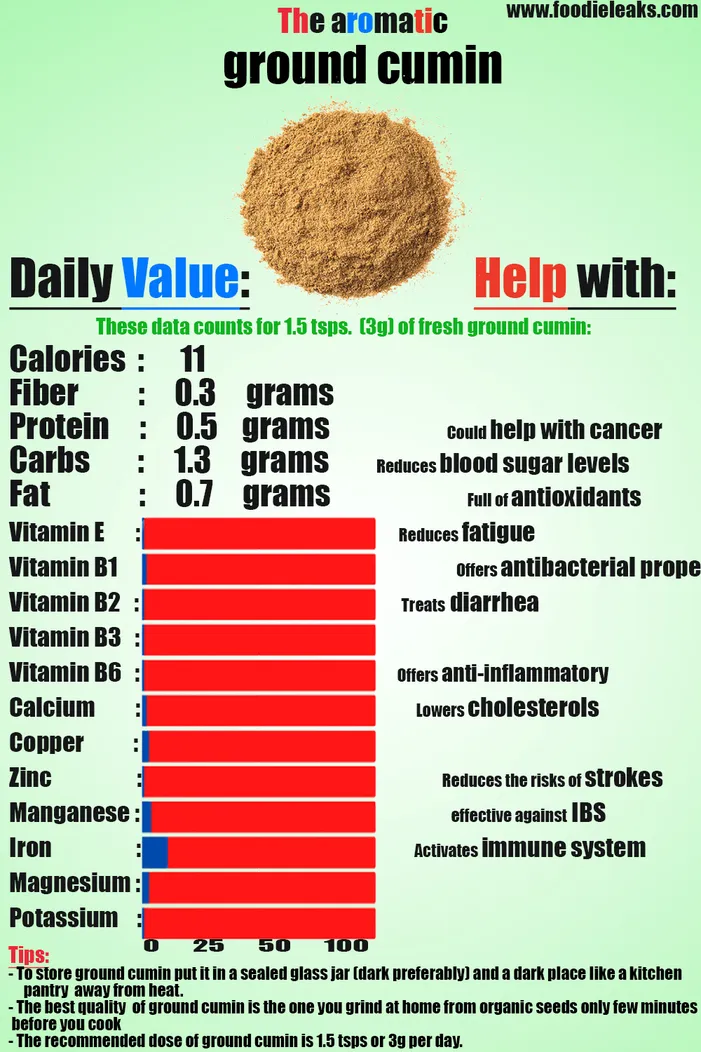
That small amount of ground cumin offers more than 10% of the daily needs in Iron and 4% of the daily needs in Manganese.
Also, that daily dose contains a smaller amount of calcium, copper, magnesium, vitamin E, B1, B2, B3, and B6.
As for plant-based components, this spice contains carotene, melatonin, lutein, cuminaldehyde (responsible for the taste)…
Many other nutrients in cumin are not popular but they are responsible for the many health benefits of this spice.
Health benefits:
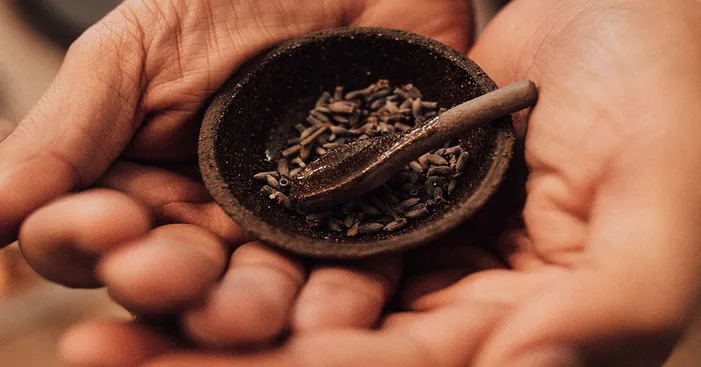
Could help with cancer:
This famous condiment can help the body get rid of free radicals which will lower the risk of many health issues.
You should know that free radicals are highly reactive compounds that significantly increase oxidation stress.
By increasing the oxidation levels, the body becomes more vulnerable to abnormal reactions like tumors and cancer cells.
Therefore, reducing oxidation stress lowers the risk of cancer, dementia, heart disease…
Cancer usually grows when the cells grow out of hand at a specific region of the body and gather together to form a tumor.
According to studies, cumin, and basil were the best anti-cancerous plants among the top 10 famous herbs and spices.
Another study on rats shows that cumin was able to protect these animals from colon cancer.
This is because the nutrients found in this spice can break cancer cells and inhibit the growth of tumors.
Now, this doesn’t mean that cumin by itself can cure cancer but it can certainly reduce the risk of stomach, colon, and liver cancers.
Reduces blood sugar level:
This is actually one of the main uses for cumin in traditional medicines and that is to help diabetic patients.
In fact, the cumin remedies are very effective in managing diabetes which was an inspiration for further research.
Animal studies confirm that the nutrients in this spice can control blood sugar levels.
Thanks to its oils, cumin can help reduce urea in the blood which usually interferes with the body’s reaction to insulin.
Full of antioxidants:
Cumin contains many powerful plant-based antioxidants including apigenin, quercetin, and lutein.
Apigenin is a powerful flavonoid that helps the body eradicate free radicals and reduce oxidation stress.
Lutein is a very famous flavonoid that offers great anti-inflammatory properties and can protect and maintain healthy eyes.
Quercetin is also a flavonoid able to regulate histamine production, an agent that aggravates inflammation and causes:
- Fatigue.
- Nausea and vomiting.
- Sinus issues and nasal congestion.
- Headaches.
Combining these components and other nutrients, cumin offers great antioxidant properties to help tackle many health issues.
Antibacterial properties:
Bacteria is present in almost everything and can reach inside our body through air, water, or food and make us sick.
You may be asking if that is the case then: why we’re not sick most of the time?
Well, that’s a good question! Luckily we have our immune system which constantly working 24/7 to protect us.
Since we consume food to supply our body with the fuel that it needs to carry on the functions of various parts.
Cumin is among the food that offers great help to our immune system by providing powerful antioxidants and antibacterial properties.
In fact, a study reveals that this spice contains elements able to eliminate certain bad bacteria.
Among those bacteria, cumin helps eradicate bacteria such as E.coli often caused by food poisoning.
This is thanks to its antiseptics which can attack and eradicate harmful bacteria, especially in the guts.
Treats diarrhea:
Another digestive system benefit cumin offers are being effective to treat diarrhea.
There’s even some research on rats that shows how cumin extract completely healed these animals from diarrhea.
In fact, cumin is effective against IBS (irritable bowel syndrome) as it can improve the consistency of the stool.
These properties are linked with the digestive fibers that cumin offers which improves liquid absorption in the intestines.
Offers anti-inflammatory properties:
Because it is rich in anti-inflammatory properties, cumin can reduce the swelling and pain caused by inflammation.
In other words, consuming this spice when experiencing pain due to inflammation will reduce the swelling and the pain.
Some pieces of research on animals confirm that cumin extract reduced inflammation and eventually swelling in lab rats.
Lowers cholesterol levels:
This is a very good thing about cumin, it contains compounds that can lower the level of bad cholesterol.
This is even backed up by studies as many show how ingesting cumin lowers bad cholesterol.
By lower bad cholesterol levels our body is less vulnerable to cardiovascular and heart diseases.
Because of that, traditional medicine suggests consuming about a tsp of cumin powder daily to maintain a healthy life.
Precautions before you consume cumin:

Even though cumin is extremely beneficial for our health it can have a couple of side effects.
Research confirms that overconsumption of this spice can suppress testosterone levels making them less fertile.
To make this easier to understand, eating a lot of cumin generally reduces masculinity.
However, females can also suffer side effects from this spice, especially during pregnancy.
In fact, in ancient times people used cumin to trigger miscarriage.
Nonetheless, here are the main side effects of regular consumption of high doses of cumin:
Lowers blood sugar levels:
Cumin has many benefits for diabetic patients, however, they need to limit their consumption of this spice.
Especially for people who are taking diabetes medicine, consuming cumin reduces blood sugar levels which alters the effects of the drug.
Therefore, make sure you consult a doctor before you start consuming cumin regularly.
May cause liver damage:
Consuming a lot of this spice can also increase the risk of liver damage.
This could be caused by the oil content of cumin which some nutrition website claim cause liver damage.
Nonetheless, we still need more studies to either confirm or falsify these claims but for now, stick to the recommended daily dose of 1.5 tsp/day.
Using cumin:
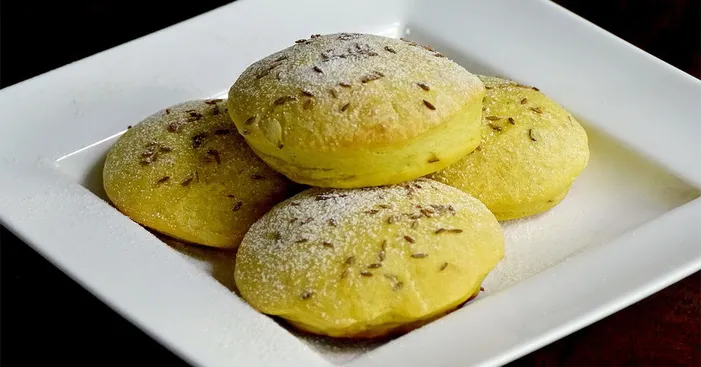
The good thing about spices is the fact they can literally add them to any dish of your choice.
However, since cumin has a strong aroma you don’t want it to overpower your dishes.
You can always experiment with doses to figure out what works best for you, but in the meanwhile here are a few ideas for you:
- You can use cumin as part of the seasoning for your meat, especially with chicken.
- To do that, just mix this spice with vegetable oil (of your choice) and salt then apply it to the meat before cooking it.
- Make sure you let the pieces of meat marinate for a few minutes to ensure they absorb most of the seasoning before you cook them.
- You can make a cumin infusion by boiling the seeds in water (1 tbsp in 1 cup of water).
- In case you are using ground cumin, let the water boil first turn off the fire, then add 2 tsp and let it cool down before you drink it.
- A good general rule is to use no more than 1 tsp of cumin (powdered or seeds) in any dish including sauces, soups, pasta, casseroles…
- Add the seeds as a garnish on your baking recipes, especially with tortillas and bread.
- Combine ground cumin with ground pepper and ground coriander and use it as a Mediterranean spicing mix for your dishes.
- It is a perfect spice to add to vegetable compotes with seafood or meat.
- Cumin combines very well with cheese or sour cream.
- This spice blends very well with tomatoes, potatoes, and beets
Mashed potatoes with ground cumin:

Ingredients:
- 2 lbs. of potatoes (1 Kg).
- ½ cup of milk (100ml).
- 6 cups of water.
- 2 tsp of olive oil.
- 1 tsp of powdered cumin, 1 tsp ground pepper, and 1 tsp salt.
Preparation:
- Start by pouring the water into a deep pot and let it cook at medium heat until it boils.
- Meanwhile, wash the potatoes well then peel them and cut them into small pieces.
- When the water starts boiling, go ahead and add the pieces of potatoes and let them cook for 25 minutes.
- Strain the small pieces of boiled potatoes then put them in a bowl and mash them with a ricer or just a fork.
- Add salt, pepper, and olive oil to the bowl and mix the mashed potatoes with a spatula (or a spoon) as you slowly add milk.
- Serve the mashed potatoes with a pinch of ground cumin on top as a side dish for meat, seafood, or sandwiches!
Home remedies with ground cumin:
Because many traditional medicine practices involve the use of cumin here’s a list of home remedies you can try:
- An infusion for constipation:
- In 6 cups of water, Soak 6 tsp. of cumin powder with 6 tsp. of fennel seeds and 6 tsp. of coriander grains then boil them.
- Strain the mixture and store it in a glass jar and put it in the fridge.
- Drink a cup every morning and a cup every evening for 3 days in a row.
- Natural toothpaste for your teeth:
- Mix 1 tbsp of rock salt with 1 tbsp of cumin then grind them into a fine powder.
- Apply it on the teeth or use it as a dry toothpaste to strengthen the teeth, and the gum and remove bad breath.
- For good digestion:
- Mix 1 tsp of black salt and 1 tsp of ground in a cup of buttermilk and drink one cup a day for 5 days in a row.
- To stimulate lactation:
- Mix 1 tsp of cumin in a cup of milk and drink it regularly to increase the production of breast milk.
- A good face wash:
- Boil 1 tbsp cumin seeds in 1 cup of water then let it cool down and store it in an airtight glass container in the fridge.
- Use this infusion to wash your face and it will restore its glow by removing freckles, spots, pimples…
- To improve your sleep:
- Mix 1 tsp of cumin powder in a glass of milk and drink it at night to promote better sleeping.
Buying cumin:
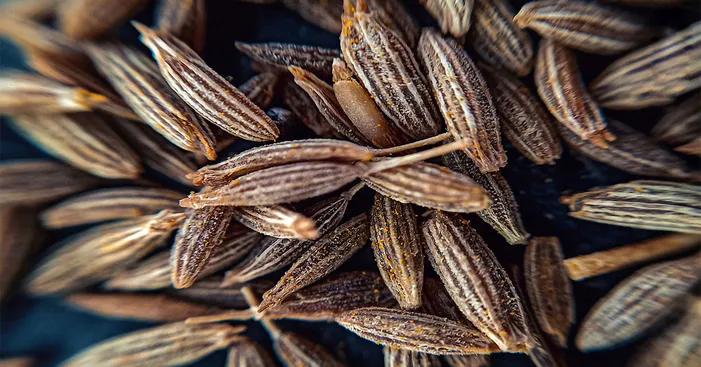
Ground cumin is available in any grocery store, however, some people don’t know how to pick a good quality product.
First, the best cumin to buy is in the form of seeds since the powder is less aromatic and sometimes even mixed with other spices.
Next, as we all know organic products are always a better choice so try to choose organic seeds.
Don’t worry, if you want to use ground cumin you can still grind it at home and that’s the best way to do it.
For instance, you will ensure that it’s pure without additives and the quality of freshly powdered cumin will be fresher.
For those who don’t have a kitchen grinder at home, before you buy powdered cumin try to rub it in your hand and ensure it smells good.
Finally, make sure you check the package and ensure it is sealed also check the expiration date.
Storing cumin:

Finally, once you get your fresh cumin seeds, their quality over time will depend heavily on the way you store them.
You need to keep it dry away from humidity, light, and even air.
To do that you can store them in an airtight container (preferably dark) and then place them in the kitchen pantry.
Good storing conditions like those will extend the shelf life of this spice for up to 1 year and it will keep both the taste and the nutrients.
If you have fresh ground cumin, you can store the powder in an airtight container and then keep them in the fridge for up to 4 days.
The reason why you need to use them quickly is that you don’t want to lose their freshness.
However, even after that time, powdered cumin can remain edible for up to 6 months but with less flavor and medicinal properties.

